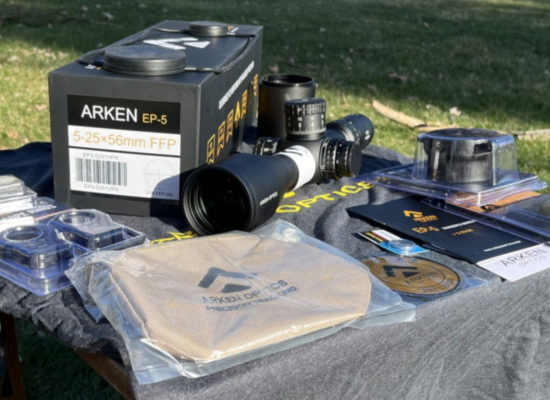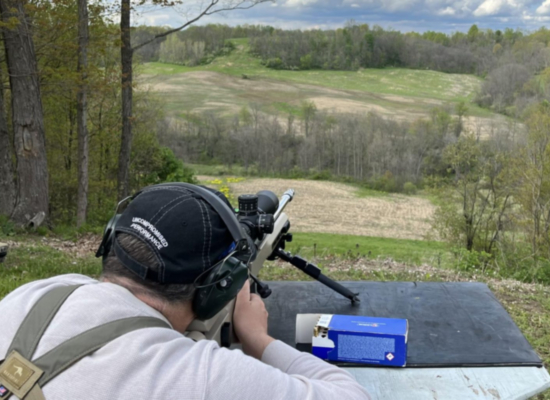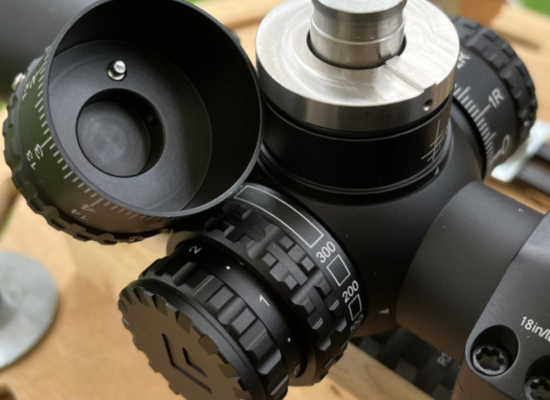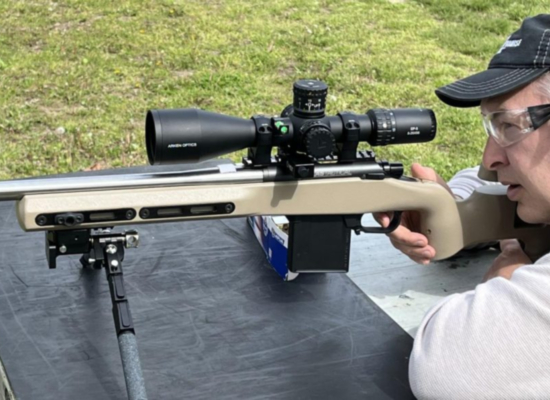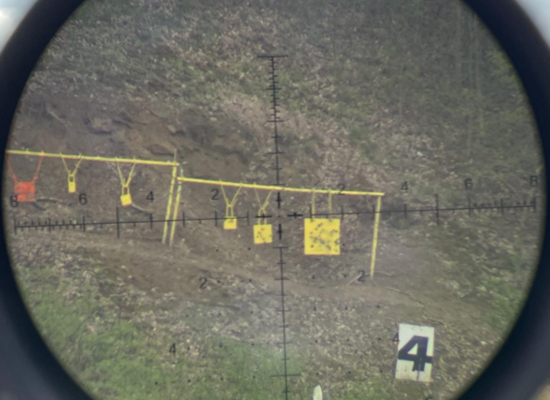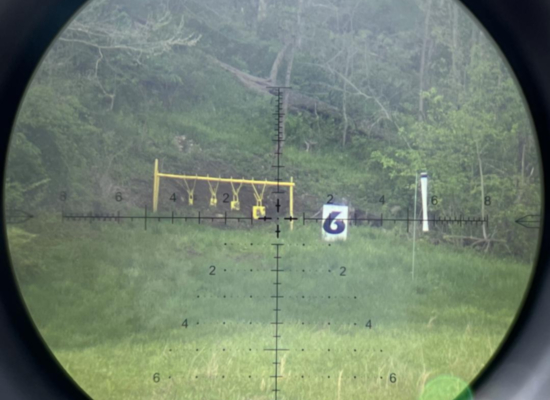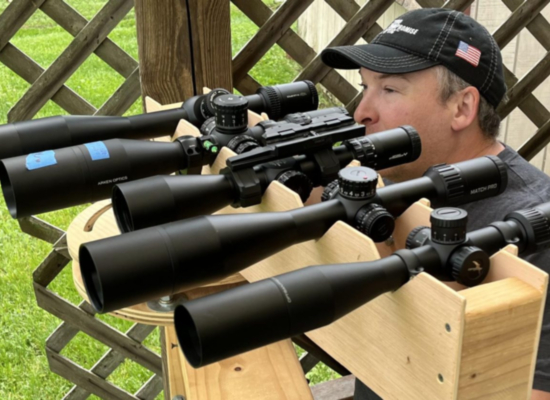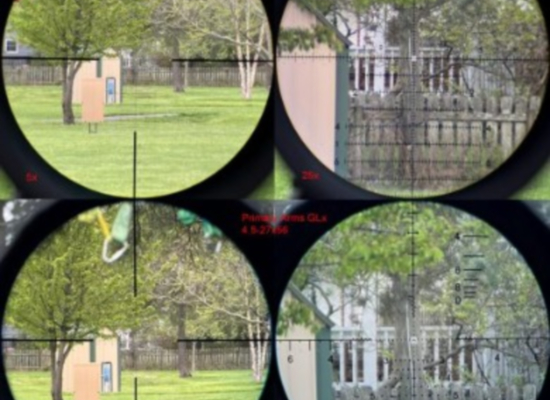Arken EP5 5-25×56 Scope Review by BigJimFish
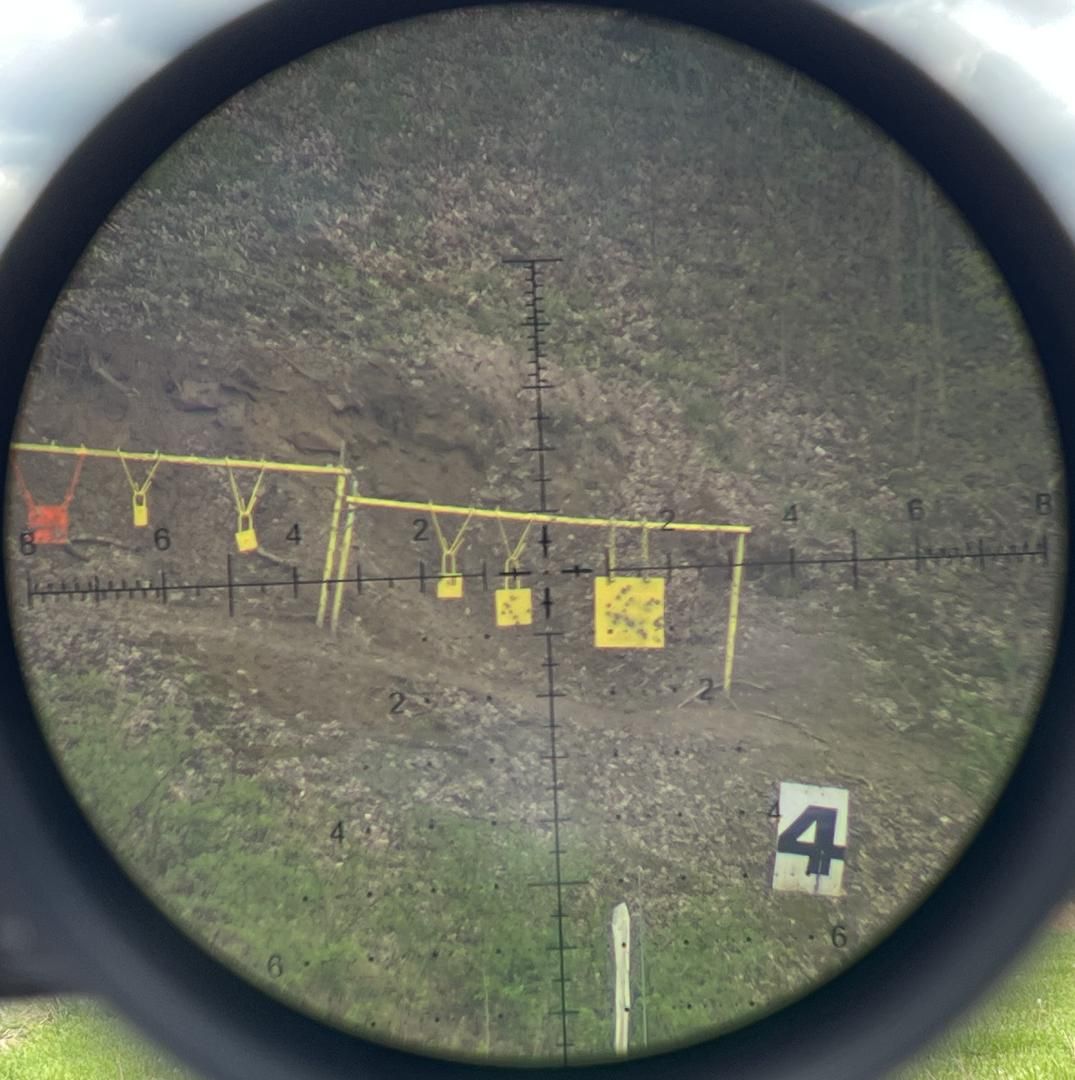
Steel plates at Rayner’s range through the Arken EP-5 5-25×56
Background:
It all started with a bet. Well, that is not exactly true, but it’s not untrue either. Pinpointing where anything, let alone a new business venture, starts, is actually a rather difficult endeavor. You could say that all businesses start with the incorporation paperwork and while that might be legally true, it’s not true in any other sense, nor is it interesting or instructive. This is a better story than filing paperwork and was the first thing to pop into Michael Benedict’s mind when I asked him how Arken was founded. It was not long after he met Michael Reilly that they were hanging out on a piece of family property for a holiday shindig. They were talking guns and Benedict bet Reilly, a Navy SEAL Team One veteran and sniper, that he could not hit a target with his AR at the full extent of the 700yds they had available to shoot on at the property. Unsurprisingly, Reilly took the bet and made quick work of that target. That was an educational moment for Benedict. This led to them discussing optics and long range shooting, which in turn led to the idea for the newly minted business major who had already been noodling around with some thinking on optics to join with the recently discharged Navy SEAL in founding an optics company.
Perhaps because they were outsiders entering the optics industry, Arken made some unusual choices. Most folks looking to be a scope brand purchase an entire line, or several lines, of optics from the product catalogue of an OEM. What this amounts to is putting your logo, perhaps a reticle, and some styling in a whole series of optical designs that the OEM has ready to go. Arken did something far more unusual. They instead hired an optical engineer to make them a scope design that they would contract the OEM to manufacture for them. This is not unusual for more established, especially higher-end brands to do on at least some of their offerings, but it’s not the most common start up route. Since Arken is a small company, it meant starting out with just one scope and adding to the product line one scope at a time. Having their own models, though, means their designs are unique and one new model at a time keeps their overhead low. They are now four years in, so it seems to be working. It is a competitive industry and these last few years have actually been pretty tough after the pandemic boom faded leaving general supply chain woes and inflationary cost pressures to go with lower demand. Arken has expanded during this difficult time. They also caught my attention through the comments of folks on this forum, questions I was asked from readers, and some things I heard from other industry folks, so I decided to go looking for them at SHOTShow this year. The product I unquestionably heard the most about, the EP5 5-25×56, fit well with the general theme of this year’s review schedule. That theme being one of my favourites, sub-$1K long range rifle scopes – a topic I am looking into for a second time in just a few years. So, I asked to take an in-depth look at the EP5 this year and the Arken guys were interested.
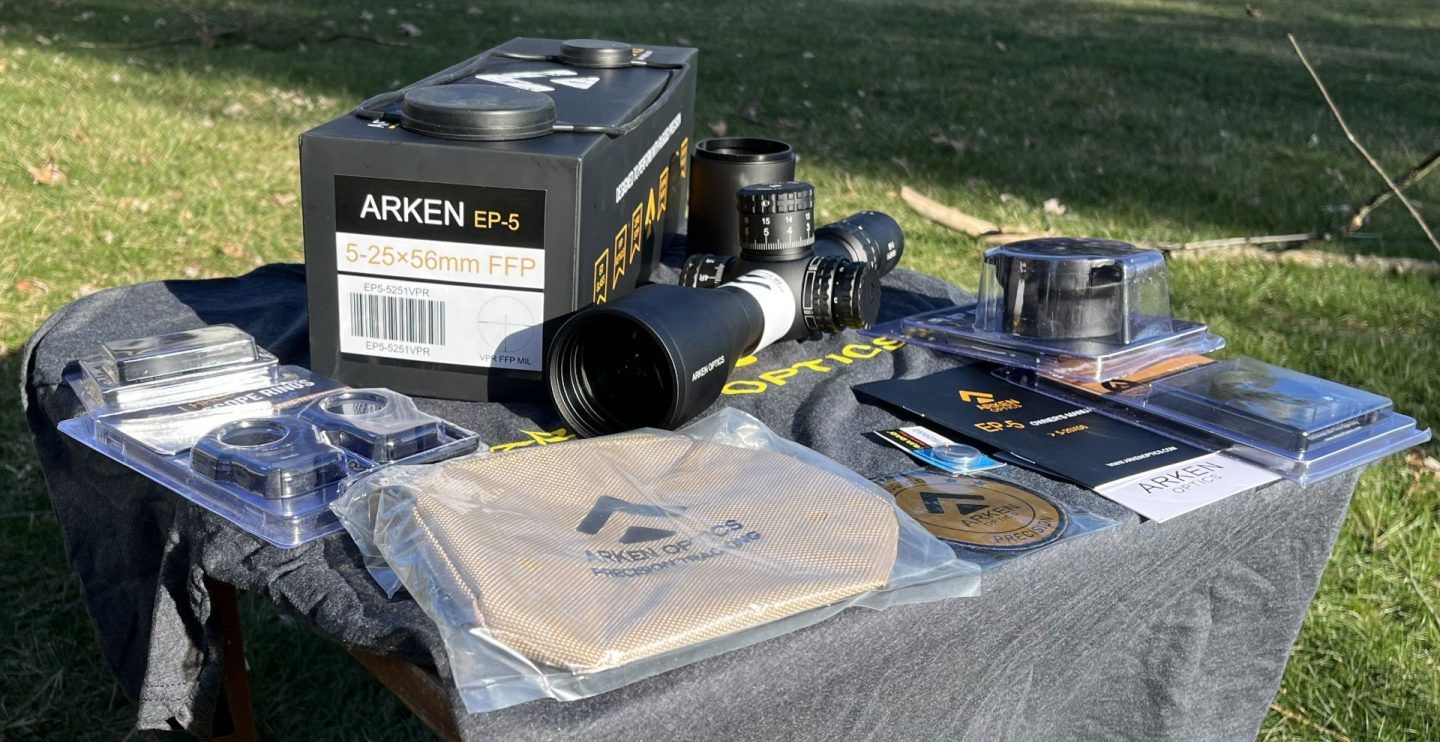
Unboxing the Arken EP-5 5-25×56 as well as the “combo pack” of accessories available with a hefty discount code at time of scope purchase.
Look and Feel:
The first thing I should talk about when discussing the Arken EP-5 is that, when you order from Arken’s website, you can get it as either scope with just a sunshade and bikini caps or with a full “combo pack”, which includes pretty much everything you need for long range precision rifles and more. This “combo pack” includes flip caps, ditty bag, hat, bubble level, throw lever, tee shirt, rings (or 20moa mount), a patch, and a sticker. Buying this combo pack alone runs $236.98 (a good value at that price), but using the code “NSF$170” when you are also purchasing the scope lets you get $170 off that price and, at present, they also make a donation to the Navy Seal Foundation. This makes the combo pack cost you just $67. That is such a good deal that it should really factor into your overall purchase decision. For the purpose of this review, I’m going to cover the scope from the value standpoint as if you bought it for the just-under-$600 it runs with the combo pack and I will take a look at all the accessories as well. The combo pack is not a limited time promotion either. It is a core function of how they sell their scopes that allows the buyer to buy all the stuff they need to get rolling in one go at a volume discount but be able to get the necessary flexibility in the package contents to accommodate correct mounting systems for different rifles and tee shirt sizes for different bellies.
As for those accessories, Arken is not giving you garbage here. The rings are quite nicely machined, good looking, and are even labelled with torque settings and centre line height. They are far nicer than I expected. While I’m sure that technically the metallurgy and tolerances are not up to what you might get from a $200 set of rings from a specialist ring maker, you won’t be able to tell that. They look every bit as nice, the fit on the scope tube is right, and I am not able to observe the feeling of stretching in the aluminium as you tighten that you can often feel on low-grade aluminium rings. They are really nice. Similarly, the fit and finish on the bubble level and throw lever are first rate. The bubble level fits perfectly on the EP-5, peeking out above the parallax knob just enough to be easily visible to the shooter behind the glass. A groove has been machined in the power adjust ring for the throw lever. Its design allows it to be positioned at any orientation and it has a truly huge lever for those into that sort of thing. The flip caps are likewise of high quality, though they are rather a bear to put on and take off. Even the ditty bag is nicely made. Arken’s combo pack is where it’s at.
As for the EP-5 5-25×56 scope itself, it’s a big boy at 39.2oz, with a full 56mm objective and 34mm tube. The adjustment knobs are of the translating type (externally move up and down when rotated) and are large. Revolution indication is of the markings on the adjustment stem type and the zero stop is of the plunger type. Arken has done this plunger-type zero stop in a simple and unique way. It is integrated directly into the knob itself and basically consists of a setscrew oriented vertically in the knob that interfaces with a raised ridge on the scope body. It is quite simple and quick to set, though it does have the disadvantage that you cannot independently choose some amount below zero to allow rotation as with collar-style stop systems. The Arken system has a hard stop at 0. Oddly, the design would have allowed the stop to be engineered at some fixed small amount below, say -.5 mils, but they chose 0.0 instead. Overall, it’s a good zero stop system. It is simple, quick, robust, inexpensive to manufacture, and easy to disable while setting your initial zero or if you don’t want to use it. The adjustment knobs themselves are 10mil per turn and the elevation has markings for the first and second turn. There is no stop at half rotation on the windage. The windage and elevation turrets adjust with a medium amount of force and have clicks that are quite tactile and audible. The click force and between click resistance are well calibrated, making it easy to make single click adjustments without overturning. You can also easily keep count of clicks without skipping over any, as often happens if clicks are too stiff compared to the adjustment resistance between clicks.
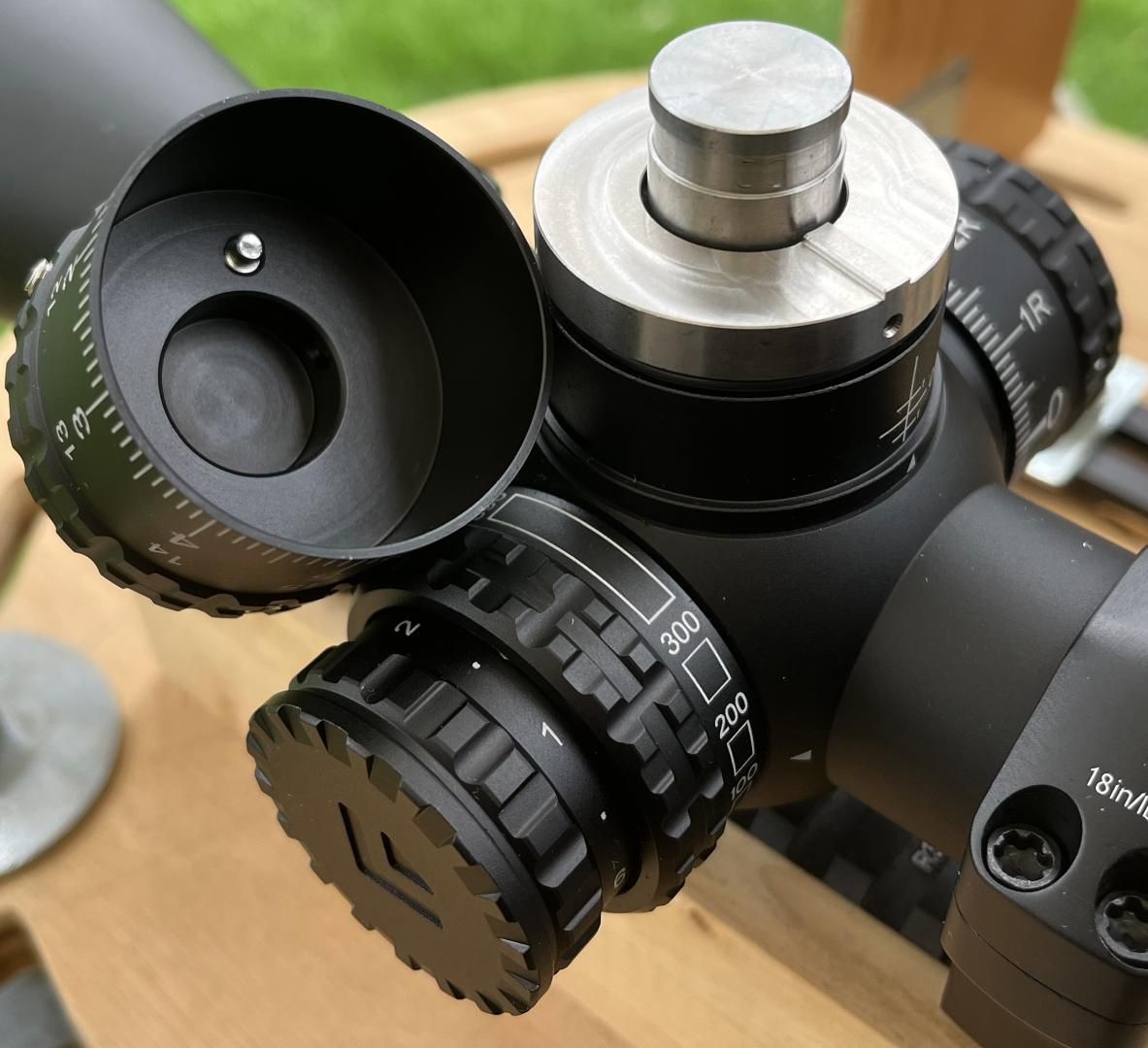
Arken Ep-5 5-25×56 elevation turret with cap removed to show zero stop mechanism
As for the other adjustments on the Arken Ep-5 5-25×56, the diopter is euro fast focus and plenty stiff to prevent accidental adjustment. The power ring has somewhere around 190 degrees of throw and a good resistance level. The side focus parallax, which goes to 25yd, also moves with a well-calibrated amount of force. It moves much more easily than the illumination control, also housed on the left side turret, so you are unlikely to accidentally move the illumination when changing parallax as can be a problem on some optics. All in all, very good work on the adjustment feel and function from the Arken folks. The EP-5 is assembled in China using Japanese glass, though the example I have is not marked with any “made in” designations.
Reticle Design:
As with most budget conscious scopes, Arken offers limited reticles for the EP-5. Limiting SKU’s like this is surprisingly important for cost efficiency. There is just one MIL and one MOA reticle option. These are designated the MIL VPR and MOA VPR and as you probably guessed, the MIL reticle pairs with .1mil click adjustments and the MOA one with .25MOA clicks.
Both reticles look pretty familiar. They are floating central dot Christmas tree designs with a truncated 12 o’clock post. The mil version has labels every 2 mils, just 5 mils above the centre in the 12 o’clock position, and a substantially wide Christmas tree starting with a full 2 mils each way at 1 mil down. The main horizontal crosshair is graduated for 8 mils both ways, with most of that having .5 mil graduations and just a section on the edge between 6 and 8 mils having .1mil graduations. There are also .1 mil fine sections in the vertical from 3 to 5 mils at 12 o’clock and from 10 to 12 mils at 6 o’clock. The horizontal graduations on the Christmas tree are .25 mils and there is a line of them every mil. In the Christmas tree section, the vertical graduations are labelled at the far edges of the tree and the horizontal graduations are not labelled, though the user might be forgiven if they confuse that vertical label for a horizontal one as it is not immediately apparent which dimension is being labelled and sometimes the brain under pressure makes erroneous assumptions even when it knows better. All in all, the MIL VPR is a pretty average reticle design and that is really what you go for if you’re doing a one-size-fits-all reticle, which is undoubtedly what you should be doing if you’re trying to make the most cost-effective scope.
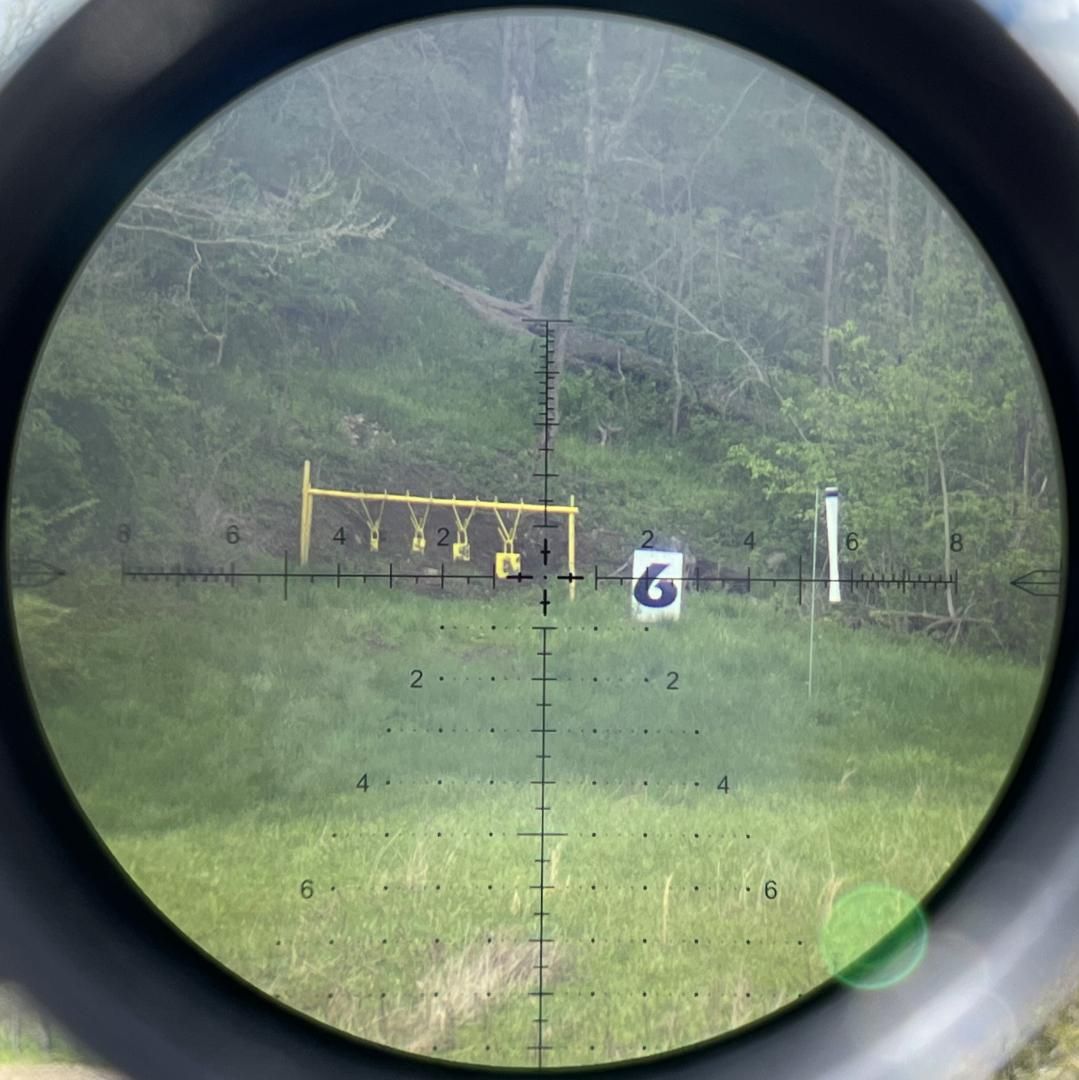
A steel plate through the Arken EP-5 5-25×56 with MIL VPR reticle
The MOA VPR very much resembles the MIL VPR but with 1MOA graduations and labels every 8MOA. This seems a strange number to me, but if you wanted a base 10 system you would go with MIL anyway, I guess, so perhaps you can mix that base 8 with the divisions of 4, 12, and 3 you already have using MOA.
Both the MIL and MOA reticles have their illumination limited to a small section around the very centre instead of illuminating most of the graduations. I prefer illumination of the full scale myself.
Comparative Optical Evaluation:
Sub-$1K optics as a category casts a wide net, and this year’s reviews include more difference in price than the past sub-$1K roundup did. At $530 alone, or $596 in a combo pack, the Arken EP-5 is the least expensive scope in this lineup and is not far from half the price of the most expensive, the Primary Arms GLx 4.5-27×56 at $900. The other scopes in the optical comparison lineup are the Optisan EVX Gen 2 4-16×44 F1 at $580, the Athlon Midas TAC 6-24×50 at $649, the Bushnell Match Pro ED 5-30×56 at $700, the Primary Arms GLx 3-18×44 at $749, and the Hi-Lux PR5 5-25×56 at $849. These are all street prices at the time of this writing and I’m listing them here in the optical performance section to give perspective, as I’m comparing some very dissimilar costing optics here and listing cost is really necessary to weight the performance.
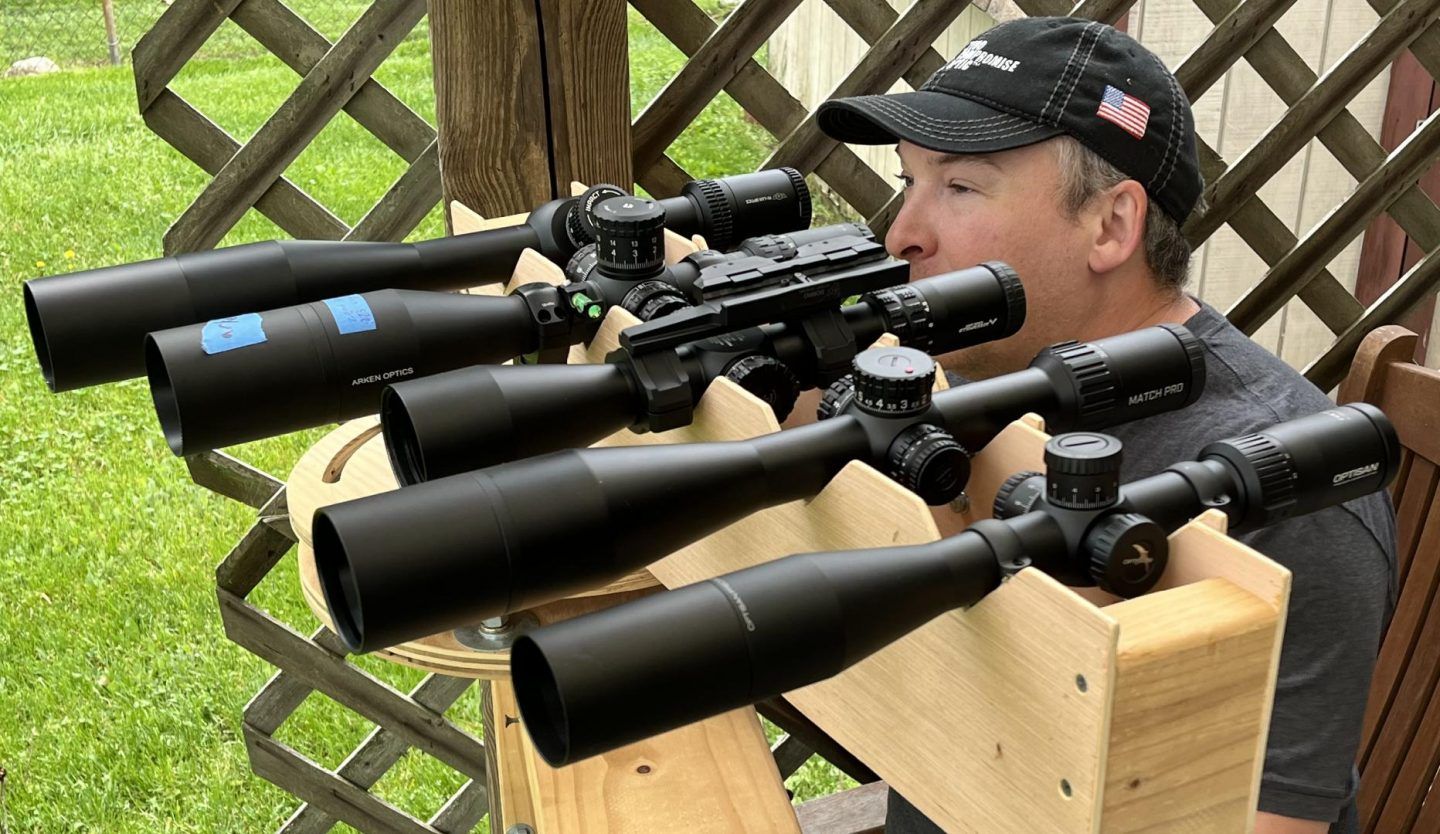
One of the optical test lineups. From top to bottom: Hi-Lux PR5 5-25×56, Arken EP-5 5-2556, Primarly Arms GLX 3-18×44, Bushnell Match Pro ED 5-30×56, and Optisan EVX Gen 2 4-16×44 F1
I want to say that the Arken EP-5’s performance optically was all over the place. This is technically correct but conveys the wrong impression. Its optical design does not feel poorly optimized, such as scopes I have encountered that have great resolution but terrible chromatic aberration or perhaps poor resolution but superb depth of field. The design instead feels well balanced in that I don’t think aspects of performance were unwisely traded for each other. Still, the Arken has a couple of areas it excels in, one it does poorly in, and most where it is a little below average when compared with the higher cost scopes in its class. I just don’t think performances in some were traded for others, as the areas of disparate performance are not closely linked from a design standpoint with the almost certain exception of FOV and stray light handling.
We will start, with what the Arken EP-5 excels at. It has perhaps the widest field of view I have ever reviewed. I’m not kidding, I checked some of the high-end stuff from a few years ago, and the Arken has a wider field of view. I even checked my personal FOV pictures because I did not trust the manufacturer’s specs, given that alpha-class stuff generally has a much wider FOV than lower cost stuff. It checked out, the Arken does, in fact, have a generally wider FOV at a given power than both the Zero Compromise ZC420 and Minox ZP5 5-25×56. That is a win in my book even if it reveals the less than crisp edges to the image that some makers would rather block. A little blurry on the edges is better than just not seeing that area at all, plain and simple. This is a point I am constantly arguing with scope makers on and seldom make much headway. Another area in which the Arken did quite well was depth of field. Here it was just below the very excellent (and much more expensive) Leupold Mark 5HD 5-25×56, and better than all but the Primary Arms GLx scopes amongst the sub -$1K round up.
As for the areas where the Arken had the below average optical performance you would expect given it’s the least expensive optic in the roundup, they included most of the core optical performance measurements. Resolution, chromatic aberration, eyebox, and contrast all fit this bill. It was only last place in contrast though, and even then, there wasn’t a huge gap before the next scope. The only place it did show a gap to the bad side was in handling stray light. You had best leave the sunshade on this Arken. It does not handle direct sunlight hitting its objective well at all. It is prone to getting hazy and whiting out pretty easily.
My overall feelings on the Arken optically were that it was generally below average for the lineup but never catastrophically so. Given its substantially lower price than the lineup average, I think this is a win. Optically, it is punching above its price and I found it quite acceptable in actual field use. My feelings from the field were: The Arken’s big FOV was quite helpful in keeping targets in view but I did miss the better resolution of my usual $2K scope when it came to making out bullet markings. This is true of all scopes in the sub $1k price range though. With the sunshade, I did not have a particularly bad time with stray light, though none of those range days were particularly glaring and my testing suggested that if it had been I would have. Lastly, I found it a pleasant, comfortable, scope to use that did not give me eyestrain.

Field of view comparison with this year’s sub-$1K long range rifle scopes from top to bottom: Arken EP-5 5-2556, Hi-Lux PR5 5-25×56, Bushnell Match Pro ED 5-30×56, Primarly Arms GLX 4.5-47×56, Primarly Arms GLX 3-18×44, and Optisan EVX Gen 2 4-16×44 F1
Mechanical Testing and Reticle Size and Cant:
Mechanical Background: Most scopes have some deviation from perfect adjustment magnitude, though they are doing far better now than just a few years ago. This adjustment magnitude error will vary from example to example within the same model of scope. This is because it is not a product of design errors, but rather variances introduced in manufacturing and, particularly, the assembly. So, the performance of my test samples is a piece of information with only limited value due to representing only one example. Often, we measure adjustment magnitude error as a percentage, such that a scope whose reticle moves 10.1 mils when adjusted 10.0 mils tracks at 101% and one whose reticle moves 9.9 mils when 10.0 is dialled tracks at 99%. Frank has helpfully compiled a list of adjustment deviation of all scopes he has tested in class that can give you an idea of how often, and by how much, adjustment magnitude deviates from ideal. Notably, error in adjustment magnitude error can be corrected for in many ballistic software packages by entering a factor such as the “sight scale factor” in Applied Ballistics Elite.
When testing the reticle dimensions, the Arken EP-5 5-25×56 tested 100% correct, though it was canted clockwise relative the adjustments 1.15 degrees or .2mils in 10mils of elevation travel. This is more than I would like to see. Typically, I see .5 degrees or less cant with most of the many scopes I have tested. I would like to see Arken tighten up the QC requirement on this aspect of production. Deviating .2 mil horizontally on a 10mil drop shot is a lot and it is not easy for most users to either detect or correct for reticle cant.
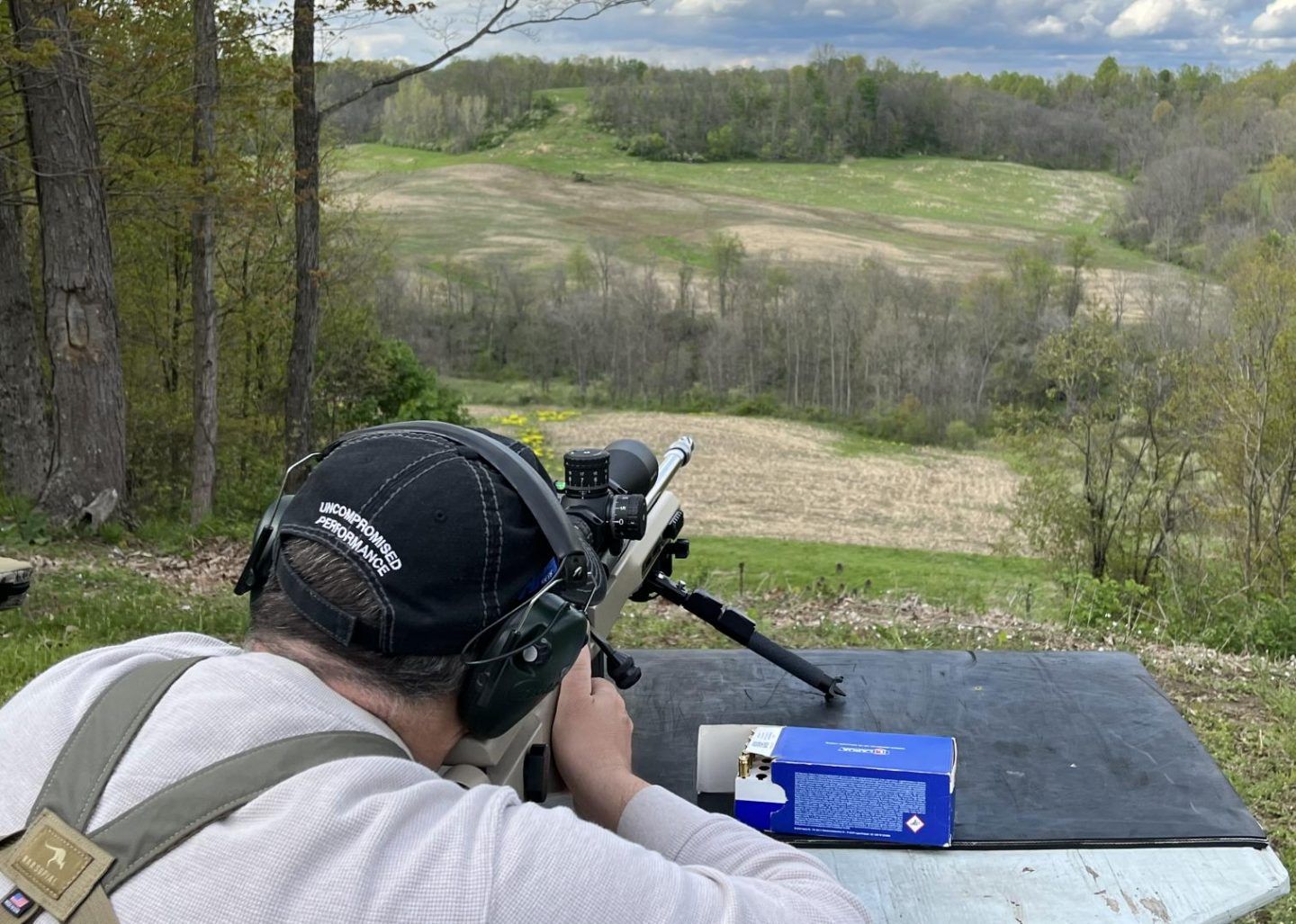
Shooting the Arken EP5 5-25×56 700yds across a valley at Rayner’s Range
As for the adjustments themselves, the Arken showed less than .1 mil deviation in 10.0 mils of adjustment. In the up direction, it travelled a maximum of 19.1 mils from optical centre. Going down it travelled 15.4 mils from centre, for a total of 34.5 mils, all of which will be accessible with this turret design. As is usually the case, there is less windage adjustment as you get close to the maximum in elevation adjustment in either direction because you have less room left and right for the erector tube as you get near either the top or the bottom of the main tube. At maximum up for instance, you had only 10.0 mils one-way and 7.7 the other. This is actually a lot better than most scopes have at max elevation but is still something users should keep in mind.
One thing that was notable on the Arken was that the clicks did not always perfectly align with the engraved markings on the knob. They could be as far as .04 mils or almost half a click off when about halfway around. As I continued rotating, the clicks progressively moved back to correctly aligned at a full turn. I have noted a number of scopes with this marking drift, I expect it is related to issues with the laser engraving machines for the knobs and seems to be rather common. Lastly, the Arken showed no point of aim shift with power ring, parallax, or diopter movement. The parallax marking of 100yds was also calibrated to be right on at 100yds, something notable because it is not usually the case.
Summary and Conclusion:
I spent a lot of time at the range with the Arken EP-5 5-25×56, more than I usually spend during a review. Part of this was that I was not just looking to parse out how I felt about the Arken relative to its peers, but also what I thought of the proposition of a scope that is < $600 ready to mount on your rifle with all the accessories it needs to do long range precision rifle work. Over time, the cost of a scope that can reasonably do precision rifle work has steadily marched down, even against the torrent that is now inflation. Could we really be at $596 with rings, level, and throw lever now, or would that price just come with too many compromises? Would it fatigue my eyes over the course of long range days as scopes of lower optical performance often do? Or would it just not resolve well enough to reveal impacts and the splash from misses? While I certainly noticed less ability to make out the specific impact markings on plates down range than I usually can with the $2K+ scopes most of my rifles wear, I still saw movement well enough to call all the impacts and their general quadrant as well as the misses. I called everything my brother was able to also call through the spotter. In the end, I found the Arken not just quite usable, but also rather enjoyable to shoot with no eye fatigue after a full day of it.
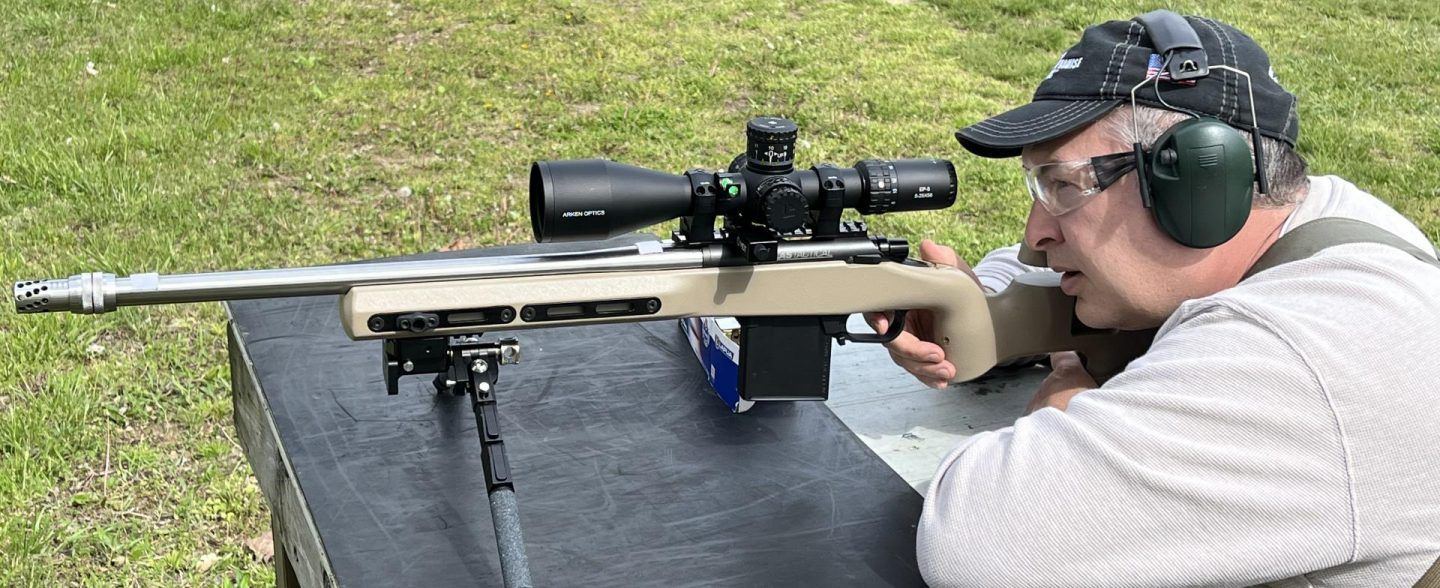
Shooting the Arken EP5 5-25×56 on my Kelbly’s Atlas rifle
Combining these field thoughts with my other testing yields an overall positive assessment of the Arken EP-5 5-25×56. Optically, it performs well for its price. Mechanically, I would like to see tighter tolerances on reticle cant, but it was exceptional in all other respects. The feel of the adjustments and function of the zero stop system was quite good, even if I wish they would have given you half a mil below zero instead of the hard stop at zero. The accessories available at time of purchase through the discount code with their combo pack are just excellent in quality. They are a huge enhancement to the value proposition and provide everything you need to help your optic perform its best at long range. That value proposition is strong here. Whether that eases nerves of a first purchase for a beginning shooter, provides a lower cost option that lets you outfit more rifles with their own scope so you don’t have to share, or opens up the possibility for a shooter to get into long range that otherwise would not be able to swing a scope that runs more than a big screen TV, this Arken is giving a lot of people a nice option they never had before.
Your Pro and Con Breakdown:
Pros:
– Zero stop is simple and easy to set and knob feel is good
– Close 25yd focus capability for rimfire
– Substantial 34.5 mils of elevation travel
– The “combo pack” purchasable at a discount at time of purchase is very high quality, affordable, and gets you scoped, mounted, levelled, capped, and even clothed for $596
– Optical performance is good for the price
– Lifetime warranty
Cons:
– It is big, and, at 39.2oz, heavy
– Reticle on test sample was canted >1 degree. This is a little more than I would like
EQUIPMENT
BRANDS
This post was written by Les Fischer (BigJimFish) for Sniper's Hide. You can view the original post HERE.














